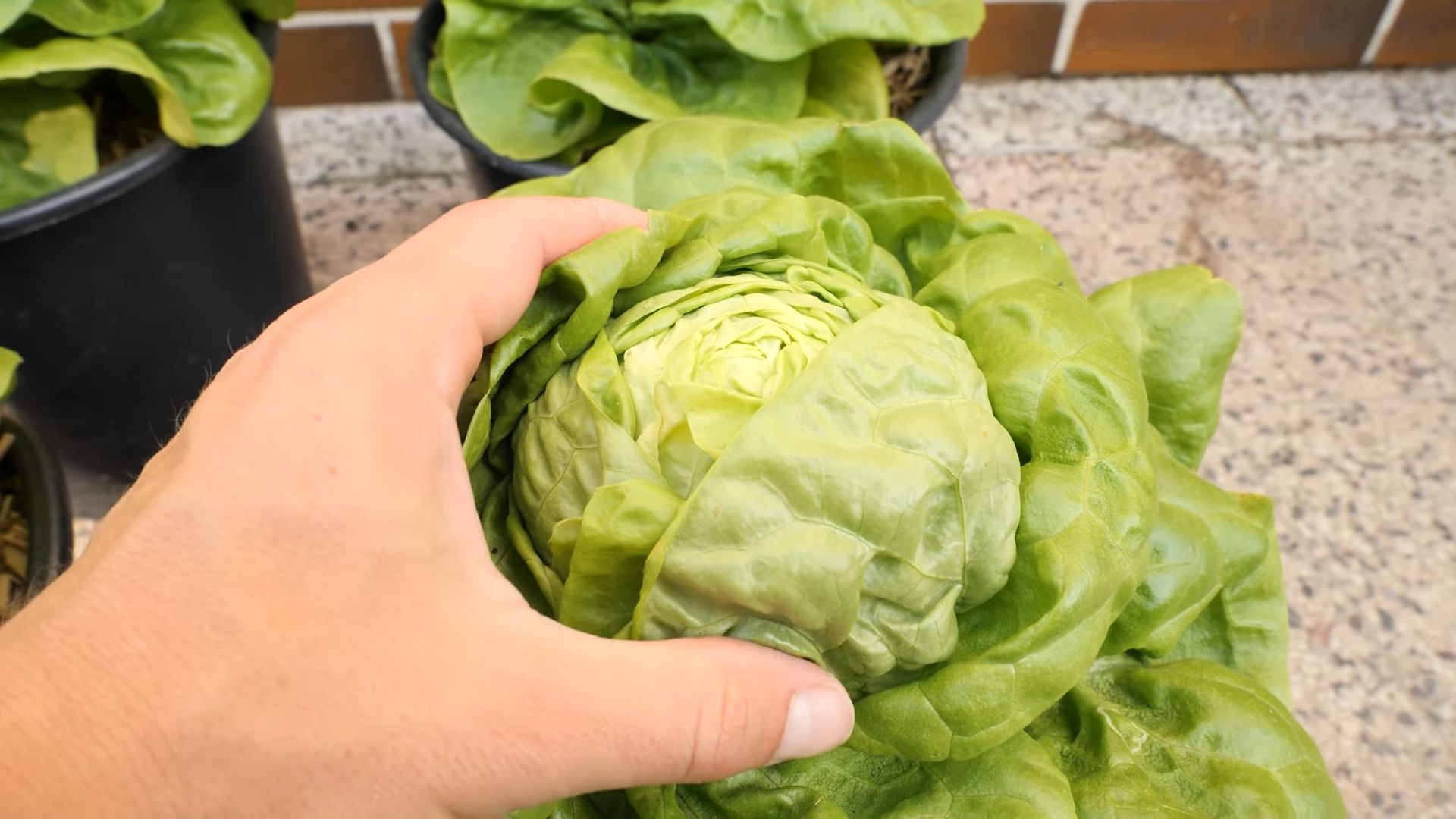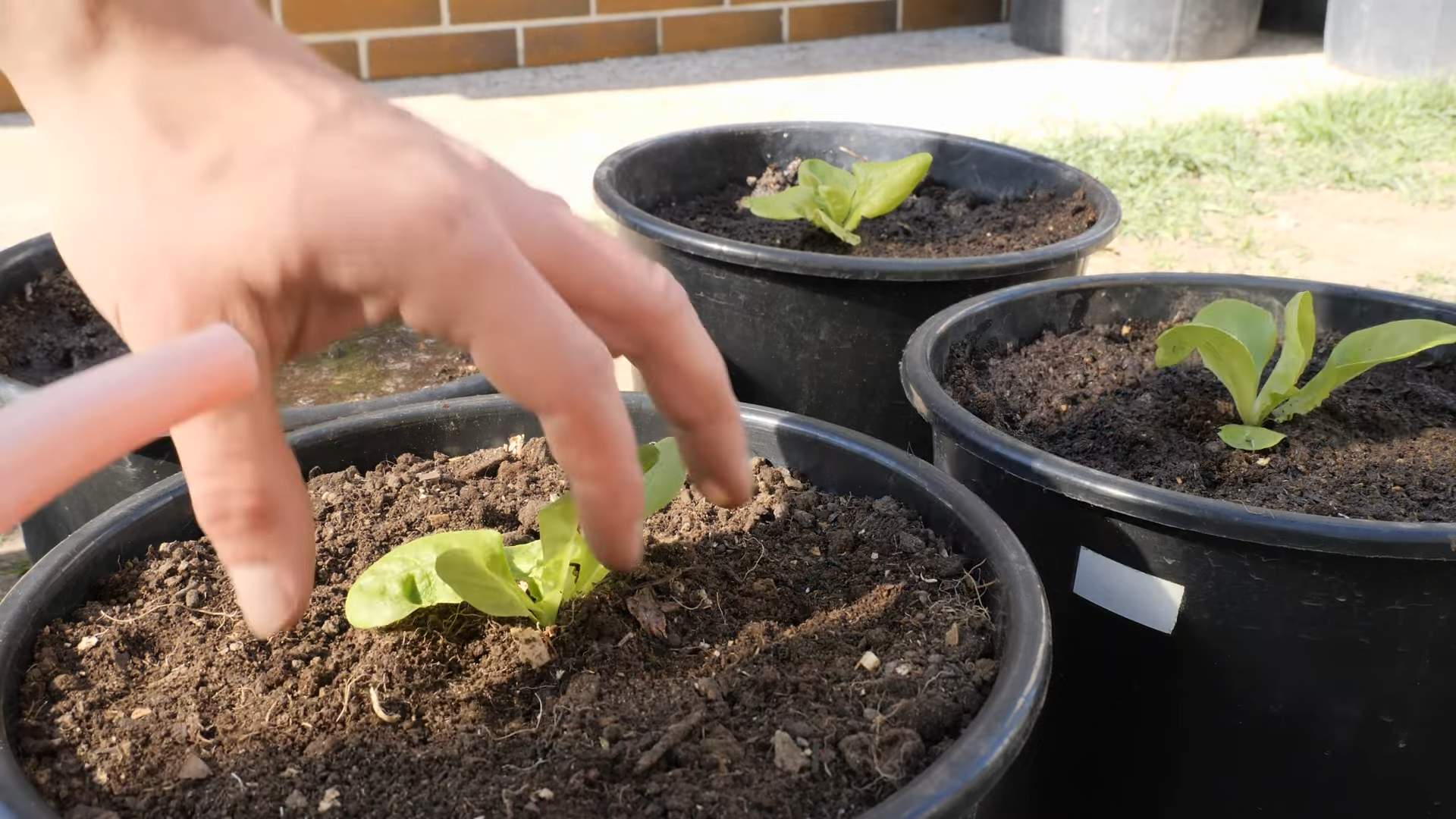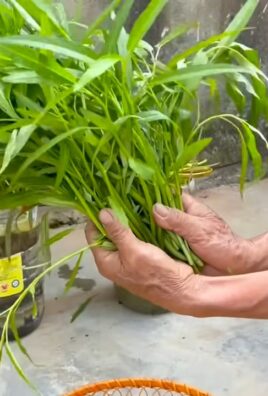Growing Lettuce in Containers: Your Guide to a Bountiful Harvest
Growing lettuce in containers has become a popular and rewarding hobby for many, and I’m thrilled to share my own tips and tricks with you! Forget the image of sprawling fields; with a little know-how, you can enjoy fresh, crisp lettuce all year round, right from your own backyard, balcony, or even windowsill. This isn’t just about convenience; it’s about connecting with nature and experiencing the pure satisfaction of harvesting your own homegrown produce.
The history of lettuce cultivation stretches back millennia, with evidence suggesting its use in ancient Egypt and Rome. While traditionally grown in large fields, the modern trend towards urban gardening and limited space has made growing lettuce in containers a necessity and a delightful alternative. It’s a fantastic way to introduce children to the wonders of gardening, teaching them about where their food comes from and fostering a love for fresh, healthy eating.
Why Container Gardening is the Way to Go
Let’s face it: not everyone has the space (or the back-breaking work!) required for a traditional garden. Growing lettuce in containers offers a practical solution, allowing you to maximize your available space, whether it’s a small patio, a sunny windowsill, or even a rooftop garden. This method also provides better control over your plants, protecting them from pests and ensuring optimal growing conditions. You’ll be amazed at how much lettuce you can grow in even the smallest of containers!
In this article, I’ll guide you through everything you need to know, from selecting the right container and soil to choosing the perfect lettuce variety and implementing simple yet effective DIY techniques to ensure a thriving harvest. Get ready to transform your space into a vibrant, productive little lettuce farm! Let’s dive in and discover the joys of growing lettuce in containers.

Growing Lettuce in Containers: A Step-by-Step Guide
I love fresh lettuce, but grocery store prices can be a bit steep. That’s why I decided to try growing my own in containers! It’s surprisingly easy, and you get the freshest, tastiest lettuce imaginable. Here’s how I did it, and how you can too.
Choosing Your Lettuce and Containers
- Select your lettuce varieties: I recommend starting with loose-leaf lettuces like Red Sails or Black Seeded Simpson. They’re easier to grow than head lettuces and are more forgiving of less-than-perfect conditions. You can also experiment with different colors and textures for a beautiful and diverse salad bowl!
- Choose the right containers: Almost any container will work, as long as it has drainage holes. I used a mix of things: large plastic pots (at least 12 inches in diameter for optimal growth), repurposed food containers (like yogurt tubs – make sure to poke drainage holes!), and even a few hanging baskets. The key is to ensure the containers are deep enough (at least 6 inches) to accommodate the roots.
- Consider your space: Think about where you’ll place your containers. Lettuce needs at least 6 hours of sunlight per day, so choose a sunny spot. If you have limited space, consider vertical gardening techniques using stacked containers or hanging baskets.
Preparing Your Growing Medium
- Gather your supplies: You’ll need a good quality potting mix. Don’t use garden soil directly from your yard, as it can be too heavy and compact for containers. A well-draining potting mix specifically designed for vegetables is ideal. I also recommend having a watering can with a rose head for gentle watering.
- Fill your containers: Fill your chosen containers with the potting mix, leaving about an inch of space from the top to allow for watering. Gently firm the soil to settle it.
- Optional: Add fertilizer: While not strictly necessary, a slow-release fertilizer can give your lettuce a boost. Follow the instructions on the fertilizer packaging carefully, as using too much can harm your plants.
Planting Your Lettuce Seeds
- Sow the seeds: Lettuce seeds are tiny! I recommend sowing them about ¼ inch deep and spacing them about 1 inch apart. If you’re using larger containers, you can plant multiple seeds in a cluster, knowing you’ll thin them later.
- Gently cover the seeds: After sowing, lightly cover the seeds with potting mix. Don’t press down too hard, as this can hinder germination.
- Water gently: Use a gentle spray from your watering can to moisten the soil. Avoid overwatering, which can lead to seed rot.
- Label your containers: This is especially helpful if you’re growing multiple varieties. A simple label with the lettuce type and planting date will save you confusion later.
Caring for Your Growing Lettuce
- Provide adequate sunlight: Lettuce needs at least 6 hours of sunlight daily. If your containers are in a shady spot, consider moving them to a sunnier location.
- Water regularly: Keep the soil consistently moist, but not soggy. Water deeply when the top inch of soil feels dry. The frequency of watering will depend on the weather and the type of container you’re using. Smaller containers will dry out faster than larger ones.
- Thinning: Once your seedlings have a few true leaves (the leaves that appear after the initial cotyledons), thin them out to give each plant enough space to grow. Space them about 4-6 inches apart for loose-leaf varieties. You can use the thinned-out seedlings in salads!
- Weed control: Regularly check for weeds and remove them promptly. Weeds compete with your lettuce for nutrients and water.
- Pest and disease control: Inspect your lettuce plants regularly for pests like aphids or slugs. If you notice any problems, treat them promptly using organic pest control methods if possible. Good air circulation can help prevent fungal diseases.
Harvesting Your Lettuce
- Harvesting loose-leaf lettuce: You can start harvesting loose-leaf lettuce when the outer leaves are about 4-6 inches long. Simply snip off the outer leaves, leaving the inner leaves to continue growing. This allows for a continuous harvest.
- Harvesting head lettuce: Head lettuces are ready for harvest when the head is firm and fully formed. Cut the head off at the base of the plant.
- Enjoy your homegrown lettuce! Nothing beats the taste of fresh, homegrown lettuce. Add it to your salads, sandwiches, or enjoy it on its own.
Troubleshooting Common Problems
Bolting
Bolting, or premature flowering, can occur if the lettuce plants are exposed to excessively hot temperatures or long days. This makes the leaves bitter and tough. To prevent bolting, choose heat-tolerant varieties, provide some shade during the hottest part of the day, and consider planting in the cooler months of spring or fall.
Pests
Aphids and slugs are common lettuce pests. Regularly inspect your plants and remove any pests you find by hand. You can also use insecticidal soap or other organic pest control methods if necessary. Diatomaceous earth can be effective against slugs.
Diseases
Fungal diseases can occur if the lettuce plants are kept too wet. Ensure good air circulation around your plants and avoid overwatering. Remove any affected leaves promptly.
Remember to always research specific pest and disease issues in your region for the most effective solutions.

Conclusion
So there you have it! Growing lettuce in containers is not only incredibly rewarding but also surprisingly simple. This DIY trick offers a fantastic way to enjoy fresh, crisp lettuce all year round, regardless of your gardening space. The convenience and control you gain by growing your own lettuce far outweighs the minimal effort required. You’ll be amazed at the quality and flavor of homegrown lettuce, a taste that simply can’t be matched by store-bought varieties. From vibrant green butter lettuce to the peppery bite of arugula, the possibilities are endless. This method allows you to tailor your lettuce garden to your exact preferences, choosing your favorite varieties and harvesting them at their peak freshness. This simple, yet effective, container gardening technique empowers you to become a self-sufficient lettuce grower, reducing your reliance on commercially grown produce and enjoying the satisfaction of nurturing your own food. Don’t just take our word for it – try it yourself! The fresh, vibrant lettuce you harvest will be the ultimate reward. Share your experience and photos with us on social media – we can’t wait to see your thriving container lettuce gardens! Let’s celebrate the joy of growing our own food and the deliciousness of homegrown lettuce.
Frequently Asked Questions
Can I grow any type of lettuce in containers?
Yes! Most lettuce varieties thrive in containers. Loose-leaf lettuces, butterhead lettuces, romaine lettuces, and even smaller varieties of leaf lettuces like arugula and spinach are all excellent choices for container gardening. However, some larger varieties of lettuce might require larger containers to accommodate their growth. Always check the seed packet or plant tag for specific size recommendations.
What size containers do I need for growing lettuce?
The size of your container will depend on the type of lettuce you’re growing and the number of plants you intend to cultivate. For smaller varieties of lettuce, a 6-inch pot can be sufficient for one plant. Larger varieties, such as romaine lettuce, will benefit from larger containers, ideally 10-12 inches in diameter. Ensure your containers have adequate drainage holes to prevent waterlogging, which can damage the roots of your lettuce plants.
What type of soil is best for growing lettuce in containers?
Lettuce prefers well-draining, fertile soil that is rich in organic matter. A good quality potting mix is ideal for container gardening. You can also amend your potting mix with compost or other organic materials to improve its fertility and water retention. Avoid using heavy clay soils, as they can retain too much water and lead to root rot.
How much sunlight does lettuce need?
Lettuce generally prefers partial shade, especially during the hottest part of the day. Aim for at least 4-6 hours of sunlight per day, but protect your plants from intense afternoon sun, which can scorch the leaves. If you live in a particularly hot climate, consider placing your containers in a location that receives morning sun and afternoon shade.
How often should I water my lettuce?
Consistent watering is crucial for successful lettuce cultivation. Keep the soil consistently moist, but not waterlogged. Water deeply when the top inch of soil feels dry. The frequency of watering will depend on factors such as temperature, humidity, and the size of your container. During hot and dry periods, you may need to water more frequently.
What are some common problems when growing lettuce in containers?
Some common problems include pests such as aphids and slugs, and diseases such as downy mildew. Regularly inspect your plants for signs of pests or diseases, and take appropriate action if necessary. Consider using organic pest control methods, such as insecticidal soap or neem oil. Good air circulation can help prevent fungal diseases.
Can I grow lettuce in containers all year round?
Whether you can grow lettuce in containers year-round depends on your climate. In warmer climates, you can grow lettuce during the cooler months of the year. In colder climates, you may need to use a greenhouse or grow lights to extend the growing season. Succession planting, where you plant new seeds or seedlings every few weeks, can help ensure a continuous harvest.
What are some variations on this DIY trick?
Experiment with different lettuce varieties to discover your favorites. Try growing different colors and textures of lettuce in the same container for a visually appealing and diverse harvest. Consider using vertical gardening techniques, such as hanging baskets or wall-mounted planters, to maximize your space. You can also incorporate companion planting, planting herbs like basil or chives alongside your lettuce to deter pests and enhance flavor.
How do I harvest my lettuce?
The harvesting method depends on the type of lettuce you’re growing. For loose-leaf lettuces, you can harvest individual leaves as needed, allowing the plant to continue growing. For head lettuces, harvest the entire head once it reaches maturity. Always use clean, sharp scissors or a knife to prevent damaging the plant.
What are the benefits of growing lettuce in containers compared to growing it in the ground?
Growing lettuce in containers offers several advantages. It allows you to grow lettuce even if you have limited space, such as a balcony or patio. Containers provide better control over soil conditions and watering. They also make it easier to protect your plants from pests and diseases. Furthermore, containers can be easily moved to optimize sunlight exposure.




Leave a Comment